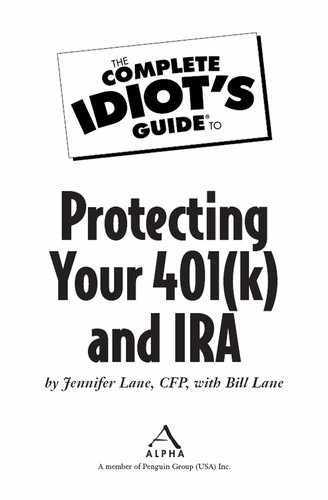403(b) Plans: More Than 401(k)s for Teachers
If you work in a public school system, a nonprofit organization, or in the clergy, you may have a 403(b) plan at work. These special accounts might resemble 401(k) accounts with a nonprofit twist, but 403(b) accounts were available long before 401(k)s appeared. The IRS created 403(b)s in 1958 to provide a mechanism for public employees to save toward retirement. Twenty years later, employees of private companies gained access to 401(k) accounts.
403(b)s are much like 401(k)s, but because they were created before all the restrictions of ERISA were created, they don’t have all the same rules and restrictions that 401(k)s do. If you do work for a nonprofit, have a 403(b), and your employer contributes to your plan, you may have the unusual circumstances of having a 403(b) that is subject to ERISA.
403(b)s are identical to 401(k)s in that:
• Contributions to the account are pretax.
• You will pay penalties for taking money out of the account before age 59½.
• Money in the account is tax-deferred until you withdraw it, then it’s taxed as income.
• You must start making minimum withdrawals from the account at age 70½.
• You’re responsible for choosing the investments.
• They can allow loans and hardship withdrawals.
403(b)s differ from 401(k)s in that:
• Employers don’t usually contribute to 403(b) accounts.
• In most cases, 403(b)s aren’t subject to the stringent ERISA rules that 401(k)s are, so they are cheaper for an employer to maintain than 401(k)s.
• Not being under ERISA means that employees are even more personally responsible for choosing investments that have low fees and are good for their retirement plans. Employers often make this choice easier by offering more than one 403(b) vendor for the employees to choose from.
Full Account
If you’ve had a 403(b) for a while, you probably have an assortment of different accounts with different investment companies. I once had a client who could choose among more than twenty 403(b) providers! It’s understandable how accounts can get out of hand when you have that many choices.
Recent rules should start to reduce the number of choices you’ll have for new plans, but you still need to consolidate all your old 403(b) accounts. Start by checking the fees and investment choices of each. High expenses are an account killer, and you need a good selection—at least 10 funds total—of both stock and bond funds in the account you decide to use.
If you have an old account through an insurance company, check the annuity surrender value. Once the surrender value equals, or gets close to, the current value, it will probably be worth transferring to a less expensive account. TIAA-CREF 403(b)s are invested in annuities, but they’re on the “good guy” list; they have low fees and good investment choices.
..................Content has been hidden....................
You can't read the all page of ebook, please click here login for view all page.
